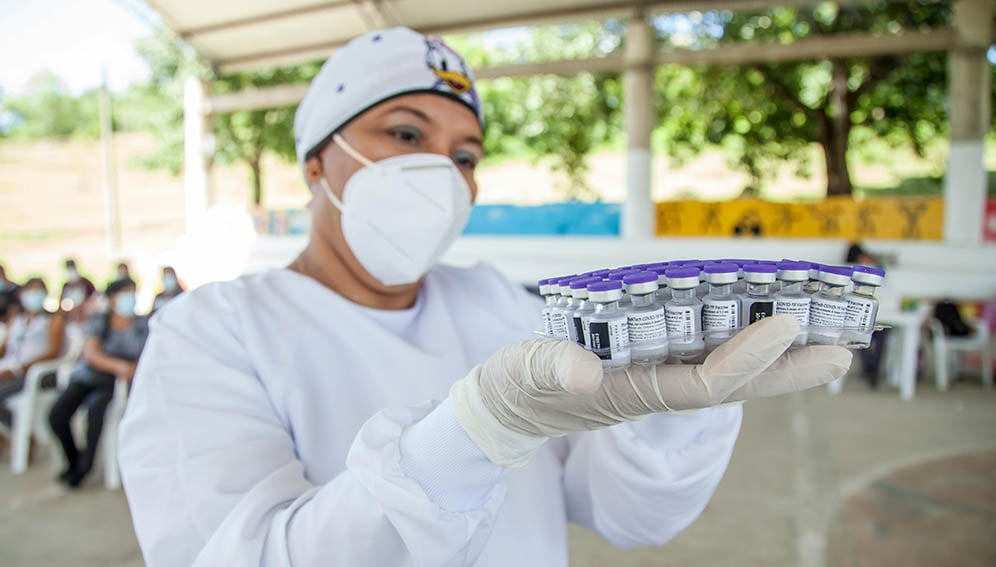
NAIROBI, SciDev.Net – In a concerning development for global health, more than 14 million children missed crucial vaccinations against diphtheria, tetanus, and whooping cough in 2024, according to new data from the World Health Organization (WHO) and UNICEF. This shortfall threatens to derail international immunization goals set for 2030.
The data, released on July 15, indicates that despite a record number of child vaccinations in low- and middle-income countries, these regions accounted for over two-thirds of the “zero-dose” children—those who received no vaccines at all. Approximately 115 million children, representing 89 percent of infants globally, received at least one dose of the diphtheria, tetanus, and pertussis (DTP) vaccine, while about 109 million, or 85 percent, completed all three doses. This marks a modest improvement from the previous year.
However, nearly 20 million infants missed at least one dose of the DTP vaccine, including 14.3 million zero-dose children. This figure, a critical indicator of global vaccine coverage, reflects an increase of 1.4 million from 2019 and exceeds the 2024 target by 4 million, jeopardizing the 2030 immunization goals.
Challenges and Barriers
Kate O’Brien, director of the WHO’s department of immunization, vaccines, and biologicals, expressed deep concern over the latest estimates, describing them as indicative of a “really worrying trajectory.” During a virtual press conference on July 14, O’Brien remarked, “The world is currently off track for the goal to halve zero-dose children and achieve at least 90 percent global immunization coverage.”
She further noted, “We have hit this stubborn glass ceiling, and breaking through that glass ceiling to protect more children against vaccine-preventable diseases is becoming more difficult.”
Conflict and Financial Constraints
Despite support from Gavi, the Vaccine Alliance, which helped lower-income countries immunize over 72 million children against various infectious diseases in 2024, significant barriers persist. Population growth, geopolitical instability, and conflict continue to impede equitable vaccine distribution, leaving millions of vulnerable children at risk.
Moreover, sweeping aid cuts by the United States, including funding reductions for global immunization programs, threaten to reverse decades of progress. WHO Director-General Tedros Adhanom Ghebreyesus warned, “Drastic cuts in aid, coupled with misinformation about the safety of vaccines, threaten to unwind decades of progress.”
“Continued commitment from governments and partners will be critical to saving lives and protecting the world from infectious disease threats,” said Sania Nishtar, CEO of Gavi.
Geographic Disparities and Efforts
Gavi reports that due to population growth, countries must vaccinate more children each year to maintain coverage levels. In 2024, there were 2.5 million more births in the 57 lower-income countries supported by Gavi compared to 2019. Despite a reduction of half a million zero-dose children, 10.2 million remain unvaccinated in these countries.
Nearly half of these children reside in five populous countries: Nigeria, DR Congo, India, Pakistan, and Ethiopia. Additionally, 30 percent live in fragile and conflict-affected settings. Coverage rates for the complete DTP vaccine series remained stable at 61 percent in the 12 countries classified by Gavi as experiencing fragility and conflict.
Efforts to reach missed children have shown some success, particularly in populous nations like India, DR Congo, and Ethiopia, but challenges persist. “Targeted efforts to reach missed children are yielding improvements, but face challenges,” noted Nishtar.
Progress in Other Vaccination Areas
Meanwhile, the vaccination landscape is not entirely bleak. In 2024, more girls in lower-income countries received the HPV vaccine than in the entire previous decade. The vaccine, which protects against cervical cancer, saw coverage rise to 25 percent from just three percent in 2019.
Additionally, measles vaccination coverage increased, with the first dose reaching 80 percent in 2024, up two percentage points from the previous year. Ephrem T Lemango, associate director for health and global chief of immunization at UNICEF, noted, “The growing immunity gaps between different countries are fueling outbreaks. Despite this, an additional 1.7 million children have been reached with the measles vaccine, representing progress in the right direction.”
As the global community grapples with these challenges, the path forward requires sustained commitment and innovative solutions to ensure that all children, regardless of their circumstances, receive life-saving vaccines.







